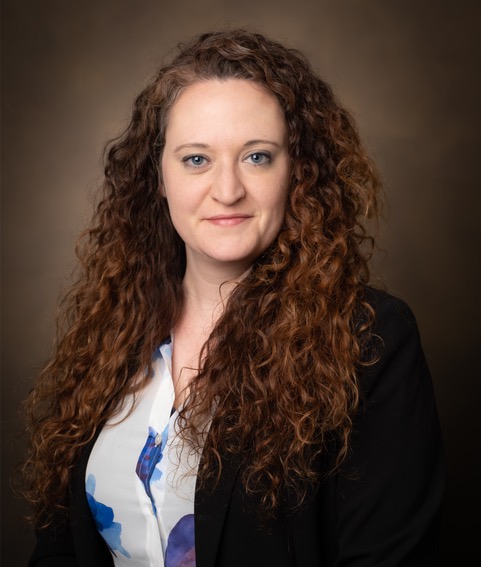
Dr. Jessica Sheldon MSc, PhD, HBSc
Assistant Professor Biochemistry, Microbiology & ImmunologyResearch Area(s)
- Host-Pathogen Interactions
- Bacterial Pathogenesis
- Molecular Genetics
- Nutritional Immunity
- Bacteriology
- Metal Ion Homeostasis
About
Education:
PhD in Microbiology and Immunology (2015) – University of Western Ontario, London, OntarioMSc in Biology (2009) – Lakehead University, Thunder Bay, OntarioHBSc in Biology (2006) – Lakehead University, Thunder Bay, Ontario
Post-doctoral Training:
2016-2021 - Vanderbilt University Medical Center, Nashville, Tennessee
2015-2016 - University of Western Ontario, London, Ontario
Biosketch:
Dr. Sheldon earned her undergraduate and master’s degrees from Lakehead University where she investigated the role of a stationary phase sigma factor in the survival of Escherichia coli O157:H7 under starvation conditions. She completed her PhD studies under the mentorship of Dr. David Heinrichs at the University of Western Ontario, characterizing a novel staphylococcal citrate synthase and defining its role in Staphylococcus aureus iron acquisition and pathogenesis. For her postdoctoral research, Dr. Sheldon joined the lab of Dr. Eric Skaar at Vanderbilt University Medical Center, where she identified an iron uptake strategy that is required for virulence by Acinetobacter baumannii and worked to define the innate immune response to infection by this pathogen. The overarching theme of Dr. Sheldon’s research is investigating how nutrient acquisition in medically relevant bacteria contributes to their survival and pathogenesis within the host. Dr. Sheldon joined the Department of Biochemistry, Microbiology & Immunology at the University of Saskatchewan in 2022.
Research interests:
Our lab is broadly interested in studying the molecular pathogenesis of multidrug resistant bacteria. In particular, we are interested in how nutrient availability impacts the outcome of infection. As a facet of the innate immune response, the host exploits the availability of essential nutrient metals to inhibit bacterial proliferation, through a process known as nutritional immunity. In turn, successful microbial pathogens possess many strategies to counter this restriction, in order to survive and replicate within the host. Together this sets up a tug of war for essential nutrients at the host-pathogen interface.
Current research within the lab focuses on Acinetobacter baumannii, an emerging opportunistic pathogen that overcomes nutrient limitation to cause a wide range of diseases, from wound and urinary tract infections, to more serious illnesses such as pneumonia and sepsis. A. baumannii has garnered attention both from the World Health Organization and the Centers for Disease Control due to its rapid acquisition of multidrug resistance, designated by both organizations as an important pathogen for research and development into novel therapeutics. Using techniques in bacteriology, molecular genetics, transcriptomics, and infection modeling, we aim to identify the mechanisms used by A. baumannii to cause disease, with a specific interest
in those involved in evading nutritional immunity. By having a better understanding of the strategies used by A. baumannii to survive within the host, we hope to inform the development of new treatment approaches.
Selected Publications
1. Sheldon, J.R., Skaar, E.P. (2020). Acinetobacter baumannii can use multiple siderophores for iron acquisition, but only acinetobactin is required for virulence. PLOS Pathogens. 6(10):e1008995. https://doi.org/10.1371/journal.ppat.1008995
2. Le, N-H., Peters, K., Espaillat, A., Sheldon, J.R., Gray, J., Di Venanzio, G., Lopez, J Djahanschiri, B., Mueller, E.A., Hennon, S.W., Levin, P.A., Ebersberger, I., Skaar, E.P., Cava, F., Vollmer, W., Feldman, M.F. (2020). Peptidoglycan editing provides immunity to Acinetobacter baumannii during bacterial warfare. Science Advances. 6: eabb5614.https://doi.org/10.1126/sciadv.abb5614
3. Perry, W.J., Spraggins, J.M., Sheldon, J.R., Grunenwald, C.M., Heinrichs, D.E., Cassat, J.E., Skaar, E.P., Caprioli, R.M. (2019). Staphylococcus aureus exhibits heterogeneous siderophore production within the vertebrate host. Proceedings of the National Academy of Sciences. 116(44):21980-21982. https:://doi.org/10.1073/pnas.1913991116
4. Sheldon, J.R., Skaar, E.P. (2019). Metals as phagocyte antimicrobial effectors. Current Opinion in Immunology. 60:1-9. https://doi.org/10.1016/j.coi.2019.04.002
5. Goncheva, M.I., Flannagan, R.S., Sterling, B.E., Laakso, H.A., Friedrich, N.C., Kaiser, J.C., Watson, D.W., Wilson, C.H., Sheldon, J.R., McGavin, M.J., Kiser, P.K., Heinrichs, D.E. (2019) Stress-induced inactivation of the Staphylococcus aureus purine biosynthesis repressor leads to hypervirulence. Nature Communications. 10:775. https://doi.org/10.1038/s41467-019-08724-x
6. Lentz, C.S.*, Sheldon, J.R.*, Crawford, L.A., Cooper, R., Garland, M., Amieva, M., Weerapana, E., Skaar, E.P., Bogyo, M. (2018) Identification of a S. aureus virulence factor by activity-based protein profiling (ABPP). Nature Chemical Biology 14:609-617. https://doi.org/10.1038/s41589-018-0060-1 (*Co-first authors)
7. Sheldon, J.R., Laakso, H.A. Heinrichs, D.E. (2016). Iron acquisition strategies of bacterial pathogens. Microbiology Spectrum. 4(2). https://doi.org/10.1128/microbiolspec.VMBF-0010-2015
8. Sheldon, J.R., Heinrichs, D.E. (2015). Recent developments in understanding the iron acquisition strategies of Gram-positive pathogens. FEMS Microbiology Reviews. 39(4):592-630. https://doi.org/10.1093/femsre/fuv009
9. Sheldon, J.R., Marolda, C.L., Heinrichs, D.E. (2014). TCA cycle activity in Staphylococcus aureus is essential for iron-regulated synthesis of staphyloferrin A, but not staphyloferrin B: the benefit of a second citrate synthase. Molecular Microbiology. 92(4):824-39. https://doi.org/10.1111/mmi.12593
10. Pishchany, G., Sheldon, J.R., Dickson, C.F., Alam, M.T., Read, T.D., Gell, D.A., Heinrichs, D.E., Skaar, E.P. (2014). IsdB-dependent hemoglobin binding is required for acquisition of heme by Staphylococcus aureus. Journal of Infectious Diseases. 209(11):1764-72. https://doi.org/10.1093/infdis/jit817
